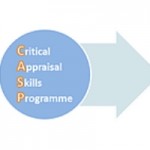
Confidence Intervals – CASP
The p-value gives no direct indication of how large or important the estimated effect size is. So, confidence intervals are often preferred.
| 0 Comments | Evaluated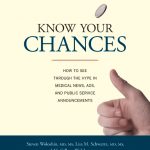
Know Your Chances
This book has been shown in two randomized trials to improve peoples' understanding of risk in the context of health care choices.
| 0 Comments | Evaluated
How can you know if the spoon works?
Short, small group exercise on how to design a fair comparison using the "claim" that a spoon helps retain the bubbles in champagne.
| 0 Comments
DRUG TOO
James McCormick with another parody/spoof of the Cee Lo Green song ‘Forget You’ to prompt scepticism about many drug treatments.
| 0 Comments
Calling Bullshit Syllabus
Carl Bergstrom's and Jevin West's nice syllabus for 'Calling Bullshit'.
| 0 Comments
‘Tricks to help you get the result you want from your study (S4BE)
Inspired by a chapter in Ben Goldacre’s ‘Bad Science’, medical student Sam Marks shows you how to fiddle research results.
| 0 Comments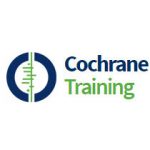
It’s just a phase
A resource explaining the differences between different trial phases.
| 0 Comments
Strictly Cochrane: a quickstep around research and systematic reviews
An interactive resource explaining how systematic and non-systematic reviews differ, and the importance of keeping reviews up to date.
| 0 Comments
The Princess and the p-value
An interactive resource introducing reporting and interpretation of statistics in controlled trials.
| 0 Comments

Teach Yourself Cochrane
Tells the story behind Cochrane and the challenges finding good quality evidence to produce reliable systematic reviews.
| 3 Comments
Explaining the mission of the AllTrials Campaign (TED talk)
Half the clinical trials of medicines we use haven’t been published. Síle Lane shows how the AllTrials Campaign is addressing this scandal.
| 0 Comments
Fast Stats to explain absolute risk, relative risk and Number Needed to Treat (NNT).
A 15-slide presentation on ‘Fast Stats’ to explain absolute risk, relative risk and Number Needed to Treat (NNT) prepared by PharmedOut.
| 0 Comments
Unsubstantiated and overstated claims of efficacy
A 32-slide presentation on misleading advertisements and FDA warnings prepared by PharmedOut.
| 0 Comments
Critical appraisal
University of New South Wales Medical Statistics Tutorial 4 addresses Critical Appraisal.
| 0 Comments
Probability and tests of statistical significance
University of New South Wales Medical Statistics Tutorial 6 addresses ‘Probability and tests of statistical significance’.
| 0 Comments
Bias – the biggest enemy
University of New South Wales Medical Stats Online Tutorial 5 addresses ‘Bias - the biggest enemy’.
| 0 Comments
Introduction to Evidence-Based Medicine
Bill Caley’s 26 slides with notes used as an ‘Introduction to Evidence-Based Medicine’.
| 0 Comments
Applying evidence to patients
A 27-minute talk on ‘Applying Evidence to Patients’, illustrated by 17 slides, with notes.
| 0 Comments
2×2 tables and relative risk
A 10-min talk on ‘2x2 tables and Relative Risk’, illustrated by 14 slides, with notes.
| 0 Comments
Appraisal of evidence and interpretation of results
A 14-min talk on ‘Appraisal of the Evidence and Interpretation of the Results’, illustrated by 19 slides, with notes.
| 0 Comments
Basic principles of randomised trials, and validity
A 8-min talk on ‘Basic principles of Randomised Trials, and Validity’, illustrated by 15 slides, with notes.
| 0 Comments
Defining clinical questions
An 8-min talk on ‘Defining Clinical Questions’ illustrated by 10 slides, with notes.
| 0 Comments
A way to teach about systematic reviews
81 slides used by David Nunan (Centre for Evidence-Based Medicine, Oxford) to present ‘A way to teach about systematic reviews’.
| 0 Comments
Applying the evidence
Six key slides produced by the University of Western Australia on applying evidence in practice.
| 0 Comments
Appraising the evidence
Six key slides produced by the University of Western Australia to introduce critical appraisal.
| 0 Comments
Taking account of the play of chance
Differences in outcome events in treatment comparisons may reflect only the play of chance. Increased numbers of events reduces this problem
| 0 Comments
Quantifying uncertainty in treatment comparisons
Small studies in which few outcome events occur are usually not informative and the results are sometimes seriously misleading.
| 0 Comments
Bringing it all together for the benefit of patients and the public
Improving reports of research and up-to-date systematic reviews of reliable studies are essential foundations of effective health care.
| 0 Comments
Applying the results of trials and systematic reviews to individual patients
Paul Glasziou uses 28 slides to address ‘Applying the results of trials and systematic reviews to individual patients’.
| 0 Comments
10 Components of effective clinical epidemiology: How to get started
PDF & Podcast of 1-hr talk by Carl Heneghan (Centre for Evidence-Based Medicine, Oxford) on effective clinical epidemiology.
| 0 Comments
Critical appraisal of clinical trials
Slides developed by Amanda Burls for an interactive presentation covering the most important features of well controlled trials.
| 0 Comments
Explaining the unbiased creation of treatment comparison groups and blinded outcome assessment
A class were given coloured sweets and asked to design an experiment to find out whether red sweets helped children to think more quickly.
| 0 Comments
Applying Systematic Reviews
How useful are the results of trials in a systematic review when it comes to weighing up treatment choices for particular patients?
| 0 Comments
Systematic Reviews and Meta-analysis: Information Overload
None of us can keep up with the sheer volume of material published in medical journals each week.
| 0 Comments
Combining the Results from Clinical Trials
Chris Cates notes that emphasizing the results of patients in particular sub-groups in a trial can be misleading.
| 0 Comments
Compliance with protocol and follow-up in clinical trials
Denis Black’s 10-min, downloadable, PowerPoint presentation on compliance, follow up, and intention-to-treat analysis in clinical trials.
| 0 Comments
Clinical Significance – CASP
To understand results of a trial it is important to understand the question it was asking.
| 0 Comments
Statistical Significance – CASP
In a well-conducted randomized trial, the groups being compared should differ from each other only by chance and by the treatment received.
| 0 Comments
P Values – CASP
Statistical significance is usually assessed by appeal to a p-value, a probability, which can take any value between 0 and 1 (certain).
| 0 Comments
Making sense of results – CASP
This module introduces the key concepts required to make sense of statistical information presented in research papers.
| 0 Comments
Screening – CASP
This module on screening has been designed to help people evaluate screening programmes.
| 0 Comments

Randomised Control Trials – CASP
This module looks at the critical appraisal of randomised trials.
| 0 Comments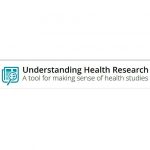
Common Sources of Bias
Bias (the conscious or unconscious influencing of a study and its results) can occur in different ways and renders studies less dependable.
| 0 Comments
Los intervalos de confianza en investigación
¿Para qué sirven los intervalos de confianza en los estudios de investigación?
| 0 Comments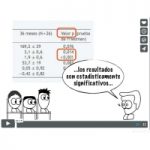

Watson en busca de la evidencia
Cómic acerca de conflictos de intereses y búsqueda de información.
| 0 Comments
The need to compare like-with-like in treatment comparisons
Allocation bias results when trials fail to ensure that, apart from the treatments being compared, ‘like will be compared with like'.
| 0 Comments
Avoiding biased selection from the available evidence
Systematic reviews are used to identify, evaluate and summarize all the evidence relevant to addressing a particular question.
| 0 Comments
Preparing and maintaining systematic reviews of all the relevant evidence
Unbiased, up-to-date systematic reviews of all the relevant, reliable evidence are needed to inform practice and policy.
| 0 Comments
Dealing with biased reporting of the available evidence
Biased reporting of research occurs when the direction or statistical significance of results influences how research is reported.
| 0 Comments
Why treatment comparisons must be fair
Fair treatment comparisons avoid biases and reduce the effects of the play of chance.
| 0 Comments
Bias introduced after looking at study results
Biases can be introduced when knowledge of the results of studies influences analysis and reporting decisions.
| 0 Comments
Reducing biases in judging unanticipated effects of treatments
As with anticipated effects of treatments, biases and the play of chance must be reduced in assessing suspected unanticipated effects.
| 0 Comments
Video games and health improvement: a literature review of randomized controlled trials
This is a critical appraisal of a non-systematic review of randomized trials of video games for improving health.
| 0 Comments
Why comparisons must address genuine uncertainties
Too much research is done when there are no genuine uncertainties about treatment effects. This is unethical, unscientific, and wasteful.
| 0 Comments
Why treatment comparisons are essential
Formal comparisons are required to assess treatment effects and to take account of the natural course of health problems.
| 0 Comments
Why treatment uncertainties should be addressed
Ignoring uncertainties about the effects of treatments has led to avoidable suffering and deaths.
| 0 Comments
What are systematic reviews?
A 3-min video by Jack Nunn and The Cochrane Consumers and Communication group for people unfamiliar with the concept of systematic reviews.
| 0 Comments
Understanding Overdiagnosis bias
Gilbert Welch’s 14-min video discussing the risks of overdiagnosis bias and screening.
| 0 Comments
Calculating and interpreting absolute and relative change in an unwanted outcome after treatment
Gilbert Welch’s 6-min video explaining how to calculate and interpret absolute and relative change in an unwanted outcome.
| 0 Comments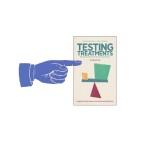
Testing Treatments Audio Book
The Testing Treatments Audiobook enables visitors to the TTi site to select whichever chapters in the book they would like to listen to.
| 0 Comments
Double blind studies
A webpage discussing the importance of blinding trial participants and researchers to intervention allocation.
| 0 Comments
CEBM – Study Designs
A short article explaining the relative strengths and weaknesses of different types of study design for assessing treatment effects.
| 0 Comments
John Ioannidis, the scourge of sloppy science
A 8 min podcast interview with John Ioannidis explaining how research claims can be misleading.
| 0 Comments
Science Weekly Podcast – Ben Goldacre
A 1-hour audio interview with Ben Goldacre discussing misleading claims about research.
| 0 Comments
Type I and Type II errors, and how statistical tests can be misleading
Gilbert Welch’s 12-min video explaining Type I and Type II errors, and how statistical tests can be misleading.
| 0 Comments
How do you know which healthcare research you can trust?
A detailed guide to study design, with learning objectives, explaining some sources of bias in health studies.
| 0 Comments
CASP: making sense of evidence
The Critical Appraisal Skills Programme (CASP) website with resources for teaching critical appraisal.
| 0 Comments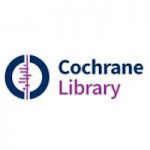
In defence of systematic reviews of small trials
An article discussing the strengths and weaknesses of systematic reviews of small trials.
| 0 Comments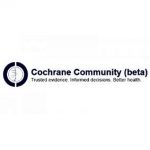
Mega-trials
In this 5 min audio resource, Neeraj Bhala discusses systematic reviews and the impact of mega-trials.
| 0 Comments
Relative or absolute measures of effects
Dr Chris Cates' article explaining absolute and relative effects of treatment effects.
| 0 Comments
Evidence from Randomised Trials and Systematic Reviews
Dr Chris Cates' article discussing control of bias in randomised trials and explaining systematic reviews.
| 0 Comments
The perils and pitfalls of subgroup analysis
Dr Chris Cates' article demonstrating why subgroup analysis can be untrustworthy.
| 0 Comments
Reporting results of studies
Dr Chris Cates' article discussing how to report study results, with emphasis on P-values and confidence intervals.
| 0 Comments
Reducing the play of chance using meta-analysis
Combining data from similar studies (meta-analysis) can help to provide statistically more reliable estimates of treatment effects.
| 0 Comments
AllTrials: All Trials Registered | All Results Reported
AllTrials aims to correct the situation in which studies remain unpublished or are published but with selective reporting of outcomes.
| 0 Comments
Routine use of unvalidated therapy is less defensible than careful research to assess the effects of those treatments
It is more difficult to obtain consent to give a treatment in a clinical trial than to give the same treatment for patients in practice.
| 2 Comments
Evidence Based Medicine Matters: Examples of where EBM has benefitted patients
Booklet containing 15 examples submitted by Royal Colleges where Evidence-Based Medicine has benefited clinical practice.
| 0 Comments
Big data and finding the evidence
“Big data” is large-scale data processing technologies intended to generate insights into performance, behaviour and trends.
| 0 Comments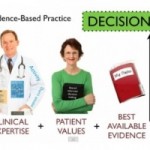
Some Studies That I Like to Quote
This short music video encourages health professionals to use evidence to help reach treatment decisions in partnership with patients.
| 0 Comments
What does the Cochrane logo tell us?
This video and animated slide presentation prepared by Steven Woloshin shows how the Cochrane logo was developed, and what it tells us.
| 3 Comments
On taking a good look at ourselves
Iain Chalmers talks about failings in scientific research that lead to avoidable harm to patients and waste of resources.
| 1 Comment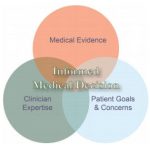
Communicating with patients on evidence
This discussion paper from the US Institute of Medicine provides guidance on communicating evidence to patients.
| 0 Comments
Surgery for the treatment of psychiatric illness: the need to test untested theories
Simon Wessely describes the untested theory of autointoxication, which arose in the 1890s and caused substantial harm to patients.
| 0 Comments
What did James Lind do in 1747?
A 2 minute Video clip of a BBC documentary recreating James Lind's celebrated experiment to test treatments for scurvy.
| 2 Comments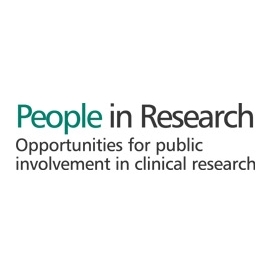
Connecting researchers with people who want to contribute to research
People in Research connects researchers who want to involve members of the public with members of the public who want to get involved.
| 0 Comments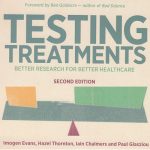
New – but is it better?
Key points Testing new is necessary because new treatments are as likely to be worse as they are to be […]
| 0 CommentsNo Resources Found
Try clearing your filters or selecting different ones.
